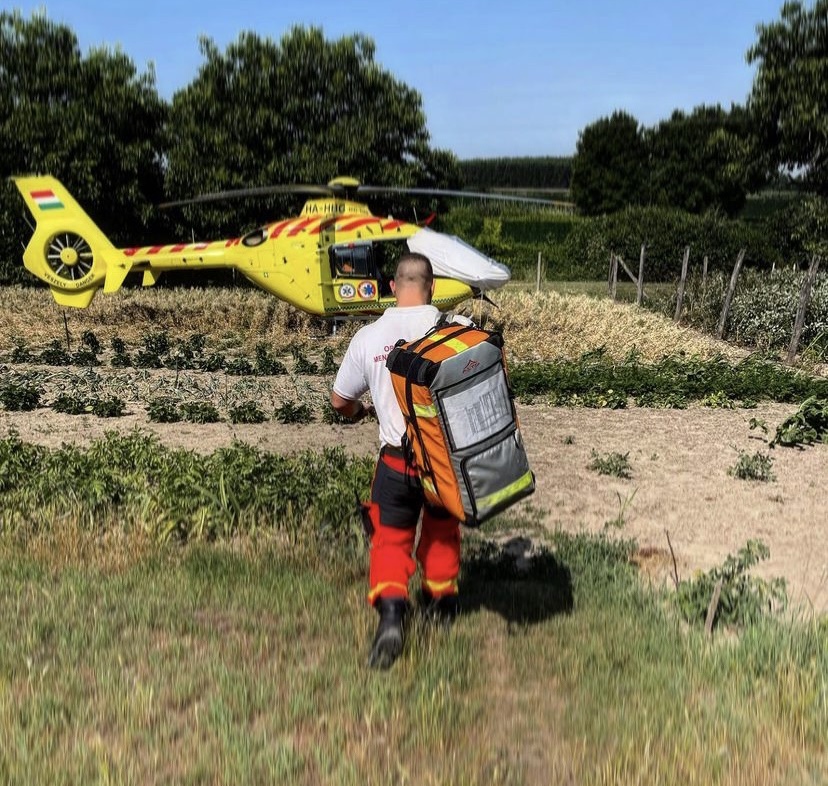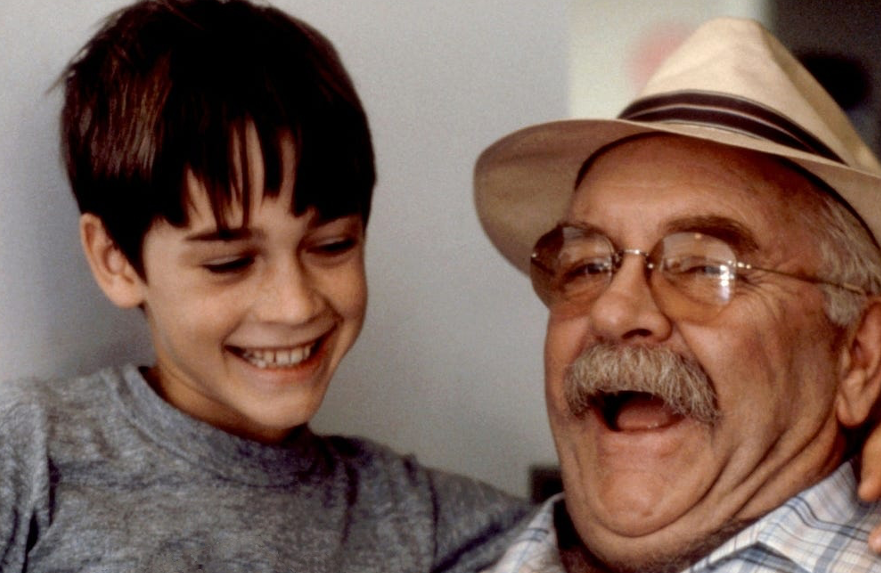
Na madrugada da 15 Abril 1912, o navio de vapor para passageiros RMS Carpathia, a caminho de Nova Iorque para a Europa, recebeu uma chamada a 58 milhas náuticas de distância. Um passageiro britânico na sua viagem inaugural tinha atingido um iceberg e estava a começar a afundar-se. A Cárpata chegou ao local quatro horas mais tarde, encontrando apenas barcos salva-vidas com 706 sobreviventes congelados, feridos e traumatizados.
O homem responsável pelo salvamento foi Árpád Lengyel, de 26 anos, que, tendo-se voluntariado junto daBudapest Volunteer Ambulance Association (BÖME) na sua nativa Hungria a partir dos 18 anos, foi o único médico a bordo com experiência como paramédico.
Árpád Lengyel tornar-se-ia reverenciado como o médico húngaro que salvou os sobreviventes do Titanic, e a Associação de Ambulâncias Voluntárias de Budapeste como o primeiro sistema de ambulância organizado húngaro, um predecessor do Serviço Nacional de Ambulâncias Húngaro, o OMSZ.

Uma incrível bomba de adrenalina
Hoje, o trabalho de resgate está muito longe de acontecer quando Árpád Lengyel, de 18 anos, se juntou à Associação de Ambulâncias Voluntárias de Budapeste em 1904. Também é marcadamente diferente de quando um estudante de medicina de segundo ano começou a voluntariar-se como enfermeiro de emergência no OMSZ no início dos anos 2000. Naquela altura, estava implementado um sistema muito mais rudimentar, disse o Dr. Gábor Csató ao website civilek.hu em junho de 2023. As ambulâncias foram enviadas via rádio, não sabendo nem as coordenadas exatas nem quaisquer detalhes. “No máximo, pudemos adivinhar que tarefa nos esperava”, disse. “Quando chegámos, todos olharam para nós como a personificação da esperança. Embora esta fosse uma responsabilidade esmagadora, também era uma sensação revigorante e uma incrível bomba de adrenalina.”
Histórias contadas pelo seu avô, um enfermeiro do condado, tinham despertado o seu interesse em medicina. Ao longo dos seus estudos na Universidade Médica de Debrecen, continuou a dedicar as suas noites e fins de semana a resgatar trabalho, pouco sabendo que iria liderar o OMSZ por volta dos trinta anos.
O OMSZ é um serviço de ambulância central com sete organizações regionais. Como diretor-geral desde 2017, o Dr. Gábor Csató é responsável por gerir o maior empregador de cuidados de saúde na Hungria, com 8500 funcionários e 256 estações de ambulância. As suas cerca de 800 ambulâncias abrangem 40 milhões de quilómetros por ano em resposta a 1,2 milhões de emergências, tendo como objetivo que qualquer emergência seja alcançada em 15 minutos.
A sua liderança inovadora e utilização de tecnologia para impulsionar resultados inovadores é reconhecida como um fator importante no sucesso recente da OMSZ nos Prémios Angels EMS. O serviço reclamou sete dos 15 prémios de diamantes atribuídos em toda a Europa no primeiro trimestre de 2023, com cada uma das suas sete regiões a cumprir o mais elevado padrão em cuidados de AVC pré-hospitalares.

Auditoria de desempenho contínua
O consultor Angels na Hungria Zsolt Lakatos pensou no motivo pelo qual os resultados de 2023 foram muito melhores do que no ano anterior, quando apenas uma em cada sete regiões se qualificou para o estatuto de diamante, o resto tendo de se contentar com o ouro. A sua análise aponta para uma combinação altamente eficaz de supervisão central e participação regional, juntamente com educação, feedback e mudança de liderança de dados.
O projeto de melhoria é conduzido a partir da sede, onde o Dr. Csató deu prioridade à recolha interna de dados numa cultura de monitorização da qualidade e introduziu a tecnologia para a apoiar. O hisentusiasmo para novas soluções e melhoria da qualidade é partilhado pelodiretor médico, DrGyörgy Pápai, que é responsável por um processo de auditoria de desempenho contínuo que é auxiliado pela recolha de dados digitais.
“A inovação está incorporada no ADN da organização”, disse o Dr. Csató à revista técnica The Medical Futurist numa entrevista de 2020. “Hoje em dia, existe um enorme nível de inovação em soluções inteligentes para cuidados de saúde.”
A operação do OMSZ gera grandes quantidades de dados que, usando algoritmos inteligentes, podem ser usados para prever, por exemplo, a possibilidade estatística de acidentes em locais específicos, ou ajudar no planejamento de capacidade.
Ao contrário da tecnologia de rádio dos seus dias de estudante, sob a liderança do Dr. Csató, cada ambulância do OMSZ está equipada com um tablet onde cada caso é registado de forma centralizada e normalizada. A medição do desempenho em relação aos critérios dos prémios EMS levou a alterações com relevância específica para os doentes com AVC, tais como “medicação do doente” e “última observação normal” a serem adicionadas como campos obrigatórios.
Os atrasos no local são analisados rotineiramente com feedback fornecido aos diretores regionais e chefes de estação, e as falhas de desempenho são filtradas pela unidade central onde desencadeiam análise, feedback, discussão e ações corretivas que incluem formação.
As e-learnings que fazem parte do programa de formação obrigatório EMS foram atualizadas para incluir AVC, e os gestores regionais recebem apoio da Angels para fornecer formação específica de AVC para expedição, enfermeiros e paramédicos. As reuniões de qualidade mensais facilitadas pela Angels, onde tanto os hospitais como os EMS estão presentes, criaram outro importante canal de feedback, com comunicação melhorada, pagando dividendos em todas as emergências, não apenas AVC.

Histórias que inspiram
Que os Prémios EMS Angels ajudaram a identificar deficiências sistémicas e locais, é também a visão de Ferenc Toldi, um funcionário de ambulância com o OMSZ durante 30 anos. Pode até ter introduzido um espírito de competição amigável.
Ferenc diz: “Os prémios do ano passado, ou em alguns casos a falta de qualquer prémio, impulsionaram as regiões a tomar medidas e a corrigir os problemas revelados durante o programa de monitorização da qualidade Angels. Uma região, a Grande Região Simples do Sul, provou ser um exemplo à medida que ganharam um prémio de diamante no ano passado, e outras inspiraram-se na sua história.”
A recolha de dados foi, em última análise, o que transformou ouro em diamantes, diz Ferenc. “A recolha contínua de dados de todo o sistema e a monitorização atenta de todos os indicadores de desempenho foram fundamentais. Além disso, envolver diretores regionais e coordenadores como campeões na sua região era crucial, pois estavam determinados a resolver qualquer problema com base nos nossos indicadores de desempenho e nos indicadores de desempenho da Angels.
“Quanto mais dados tivermos, e quanto mais exaustiva e precisamente analisarmos estes dados, mais valioso será o feedback. Podemos encontrar as lacunas no sistema e aplicamos estas conclusões quando criamos o próximo conjunto de protocolos.
“Tal como noutras áreas da vida, a análise e síntese de dados conduzem a uma melhoria espetacular.”




